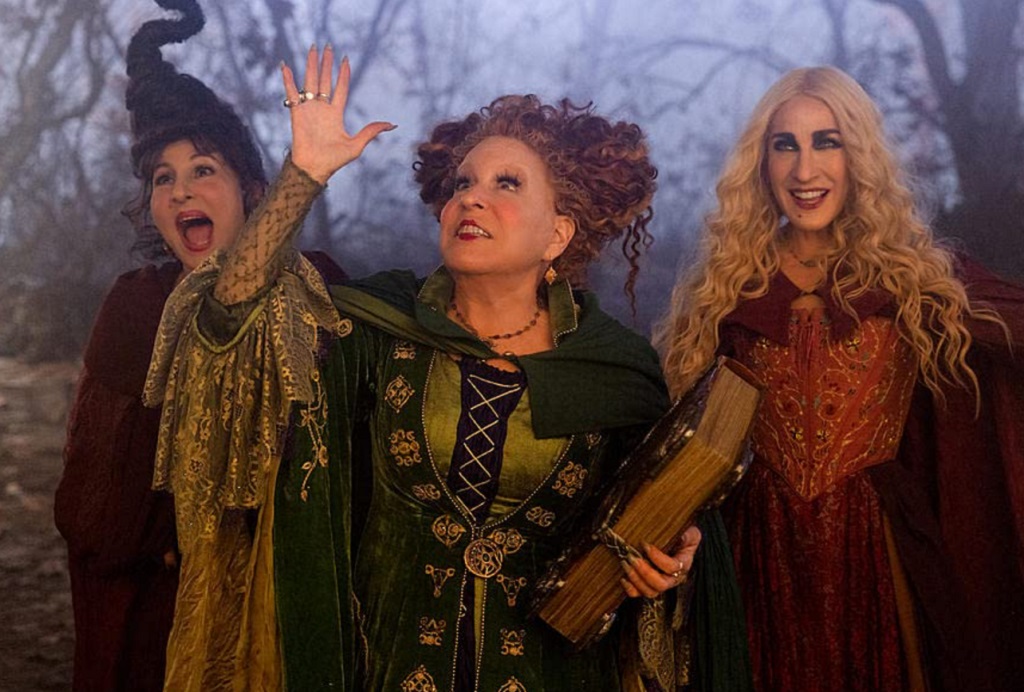
Hocus Pocus and the Salem Witch Trials
Together with the Sanderson sisters, let’s rediscover the story of one of the saddest and most terrifying chapters in American history.
With the release of the highly anticipated sequel to the Sanderson sisters’ saga, Hocus Pocus 2 on Disney+, I couldn’t pass up the opportunity to delve deeper and tell you the story of the Salem witch trials. Both films draw inspiration from this historical event to narrate the tale of the Sanderson sisters.
But what happened in Salem during those years, from a historical perspective?
Between 1692 and 1693, in this small village in Massachusetts, a series of trials unfolded. Initially based on the testimonies of some very young girls, these trials led to the accusations of witchcraft against some of their fellow townsfolk, primarily women. As months passed, the fear that the devil roamed the streets of the small community, ready to tempt anyone with lungs to breathe, especially if they were women, led to a full-fledged witch hunt. This witch hunt, in turn, resulted in trials and subsequent hangings.
The story of the Salem witch trials is one of the most famous and terrifying episodes in American history and in the history of witch hunts in general. Moreover, it is a story from which we can draw a valuable lesson: fanaticism, regardless of its origin, has always been one of the worst afflictions of humanity. The only way to counter it is through study, reason, patience, and thorough use of intellect applied to culture.
Of course, at the end of the article, I won’t forget to provide my review of the second installment of the film.
With that said, come with me, in the company of the Sanderson Sisters, as we discover the history of the Salem witch trials!
The Witch Hunt from the Old World to the New World
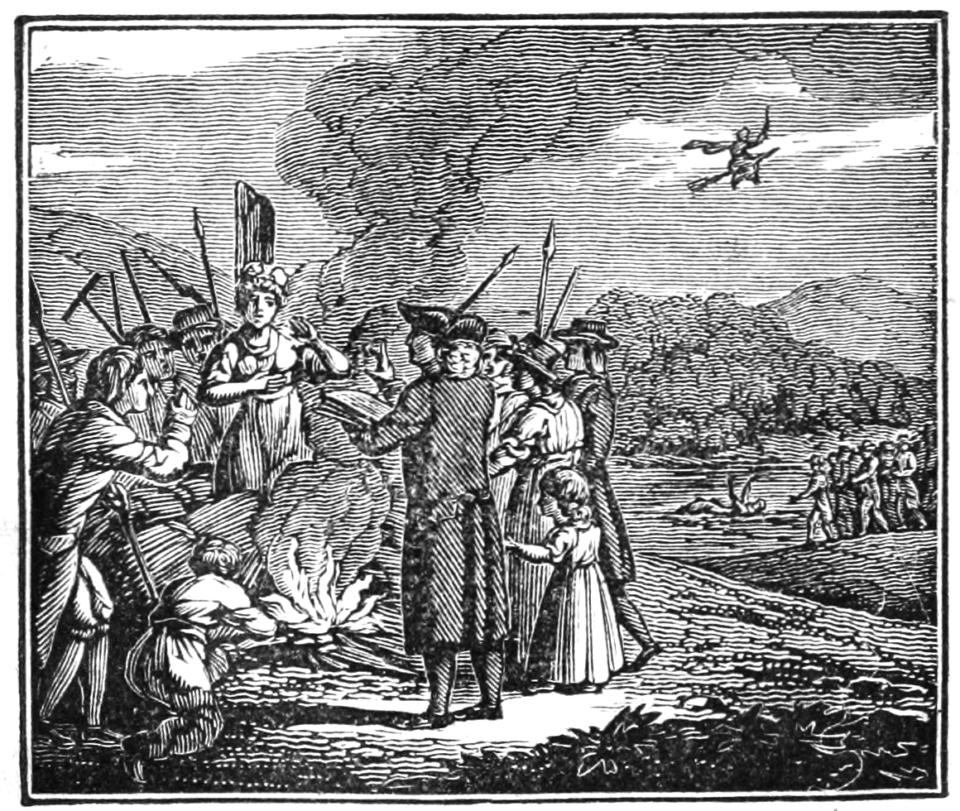
This isn’t the first time we’ve discussed witches, the history of witches, and witch hunts here on the blog. If you want to delve deeper into the matter, I recommend reading this article where the history of witches in Europe and the witch hunt on the Old Continent is discussed. In Europe, the period of most intense witch-hunting roughly spanned from 1430 to 1780, peaking between 1560 and 1630. It’s from Europe that the witch hunt originated and later migrated to the New World with the colonists. However, the underlying reasons for these events, both in Europe and in Salem, were essentially the same: fear. Fear of the different, fear of what cannot be explained. And religious and spiritual fundamentalism was the key to understanding and giving a tangible form to this fear.
The Historical and Social Context of Salem
That being said, before delving into the history of the trials, it’s essential to provide a brief context to understand what Salem was like during that period. At that time, there were two Salems. One was the bustling port town of Salem Town, which has since evolved into modern-day Salem. The other, where the entire affair began, was Salem Village. The latter was a small village of around 500 people. Sources indicate that there was no love lost between the two communities, and the village residents didn’t particularly get along with the town’s inhabitants, who were not only wealthier, as one might expect, but also more powerful, controlling the affairs of both the town and the village. The village fell under the jurisdiction of the town, which inherently led to many disputes and ongoing conflicts, making this community less than idyllic. In this contentious atmosphere, the usual and constant fear was compounded by the fear brought about by the ongoing war. Between 1675 and 1678, there was a war in those parts, known as King Philip’s War, between the English and Native Americans. The Native Americans frequently attacked settlements and conducted raids. In short, the climate in the area was far from ideal. Additionally, the religious context played a significant role, more than anything else, in influencing the matter.
The Religious Context
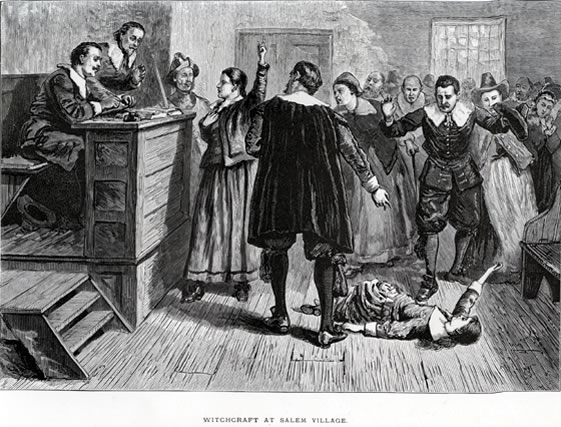
What was the religious context? The inhabitants of those areas were descendants of the old Pilgrim Fathers who had migrated to those regions from Europe aboard the Mayflower in the early 1600s. These individuals had formed the first community of North American Puritanism. The people living in Salem, therefore, were not only descendants of these early settlers but, just like them, were Puritans. Who were the Puritans, and what is Puritanism? Puritanism was a religious reform movement that gained momentum between the 16th and 17th centuries, aimed at “purifying” the Church of England. To sum it up, it was a type of movement that was very strict at the time and influenced people’s lifestyle and thinking in every aspect of human life. Religion was taken very seriously and deeply by the Puritans. They believed that truly devout individuals should have a direct relationship with God to be redeemed from their sinful condition. In short, religion touched every aspect of human life, and to be a good Christian, one had to adopt a rigorous lifestyle while avoiding those human passions that could lead to sin.
Belief in Witchcraft
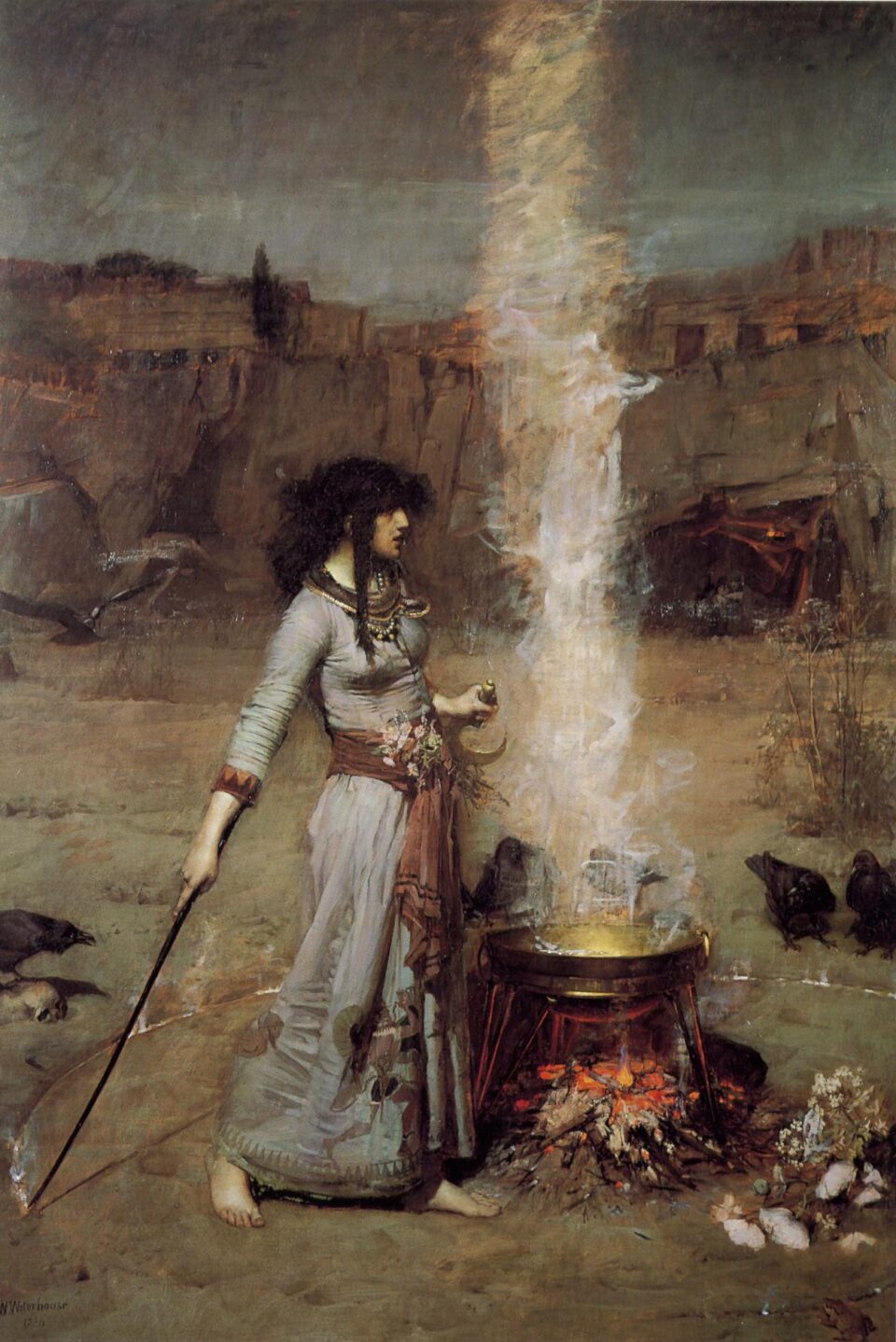
Where does witchcraft fit into all of this? Nowadays, when we think of witches and witchcraft, we tend to smile, but during that time, people took it very seriously. Speaking of witchcraft and black magic, I would refer you to this old article (is in Italian but we will traslate it as soon as possible) of ours where we delve into this very topic.
This belief is also documented by various sources and historical documents from the time, which reflect people’s fervent belief in witchcraft. Moreover, the Bible itself contains passages regarding witches and their existence. For example, in the Book of Exodus (22:18), states, “Thou shalt not suffer a witch to live.” Imagine what this could have meant in a religiously extreme community like the Puritans of that era, where the word of the Bible was considered untouchable and unquestionable.
Finally, it’s important to understand that these were historical periods where, even from a scientific and technical perspective, many of the discoveries that provide us with answers to seemingly inexplicable phenomena today had not yet been made. This means that religion was often invoked to explain incomprehensible events, and consequently, so was witchcraft. Fear has always stemmed from what we don’t know and think we can’t control. Throughout history, various extreme measures have been taken to counter it. In a community like Puritan Salem, religion was the means used to combat it. This means that if inexplicable things happened or things that people didn’t like, there were two possible explanations: it was either the will of the Lord or the work of the devil, and therefore, the witch was seen as his tool for wrongdoing. And when I say anything, I mean absolutely anything. From this perspective, an ironic example can be found in Hocus Pocus 2 when, at the beginning of the film, the three sisters use magic to set the reverend’s house on fire in retaliation. In response, he claims it was the work of the devil. The scene in the film is humorous and comedic, but in reality, this is precisely what happened. If someone’s house caught fire, they fell ill, their cow or livestock died, and more often than not, witchcraft was the explanation. To illustrate, let me give you a very simple example of the kind of dynamics that could occur, which are the same as what happened in Salem. Let’s take two people we’ll call John and Adele. Now, if at that time Adele went to John and asked to borrow some sugar, and for some reason, John refused to lend it to her and then, for some reason of fate, perhaps two days later Johns’s cat died or his only goat had a heart attack, then he could accuse Adele of witchcraft. In essence, poor Adele could be accused of witchcraft because, according to common belief, the dead cat and the goat’s heart attack were the result of black magic that Adele had decided to use to get back at the stingy and miserly John.
The Arrival of Samuel Parris

Having made the necessary (and quite lengthy, I realize) introductions, what happened? Well, in 1689, under pressure from some families in the village, Samuel Parris became the pastor, a Boston merchant who had moved there with his wife, their three children, a niece, and two slaves originally from Barbados, including a slave named Tituba, whom I will tell you about shortly. Many report that Parris wasn’t the best choice for various reasons. The situation was already tense, and Parris didn’t have the personal background and character suitable for such a place. As mentioned, Parris was not initially a pastor but a merchant. He had studied theology at Harvard but had interrupted his studies and changed careers. According to scholars, he worsened the situation because he was not well-liked by a portion of the community, which considered him very greedy and rude for demanding higher compensation than he was entitled to. Furthermore, his fiery sermons often exacerbated existing conflicts. In any case, it was from him that the entire affair began.
The Beginning of the Story
In 1692, Samuel Parris’s 9-year-old daughter, Betty, his 11-year-old niece, Abigail Williams, and their 12-year-old friend, Ann Putnam Jr., began engaging in fortune-telling and alleged magical practices. According to some scholars, they were likely inspired by the voodoo stories they often heard from the aforementioned slave, Tituba. Between January and February of the same year, the behavior of Betty and Abigail became increasingly bizarre. According to accounts, the two girls would often scream and contort, throw objects, hide, and crawl on the floor. Soon after, Ann Putnam and other children, friends of the girls, began exhibiting the same behaviors. At that point, the concerned minister, unable to understand what afflicted the girls, asked the village doctor, William Griggs, to examine them. However, Griggs couldn’t find any scientific explanation and attributed the phenomenon to the supernatural.
Simultaneously, at the suggestion of a neighbor, the slave Tituba prepared a cake known as the “witch cake.” In the popular tradition of the time, this cake was believed to help identify witches. It was made with the urine of the afflicted girls and fed to a dog. People believed that the hound, after eating the cake, would be able to recognize the witches. Needless to say, this had no effect and, in fact, further infuriated Parris, who saw it as a blasphemous act. He decided to pressure the girls to confess who had bewitched them.
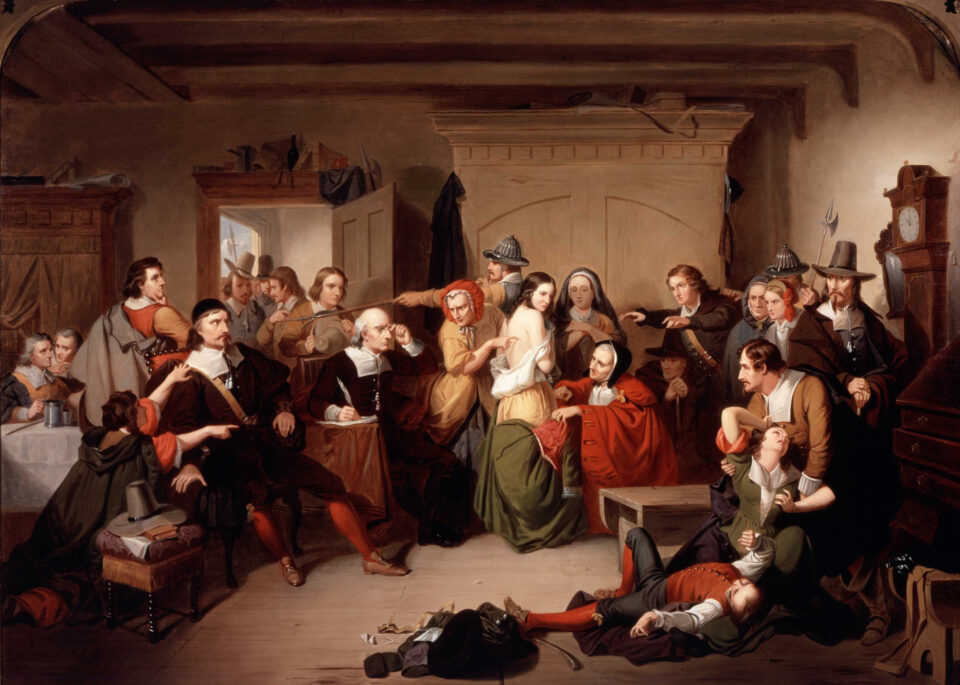
Possible Scientific Explanations for the Girls’ Behavior
A small note: to this day, we have not been able to determine exactly what ailed the girls. Scholars, upon examining the issue, have put forth various hypotheses. Some suggest they could have been afflicted by a combination of various illnesses such as asthma, encephalitis, epilepsy, and so on. Others propose that they may have experienced some form of abuse. Finally, some have even suggested the possibility that the girls were infected by a type of fungus called ergot fungus, also known as “rye ergot,” which contains the hallucinogenic LSD and can cause hallucinations, convulsions, and other symptoms similar to those exhibited by the girls. Today, however, there is no definitive explanation, but what is certain is that in such a rigid and severe environment, it couldn’t have been easy for children to live psychologically at ease, and this undoubtedly must have affected their behavior and physical well-being.
Accusations and the Beginning of the Trials
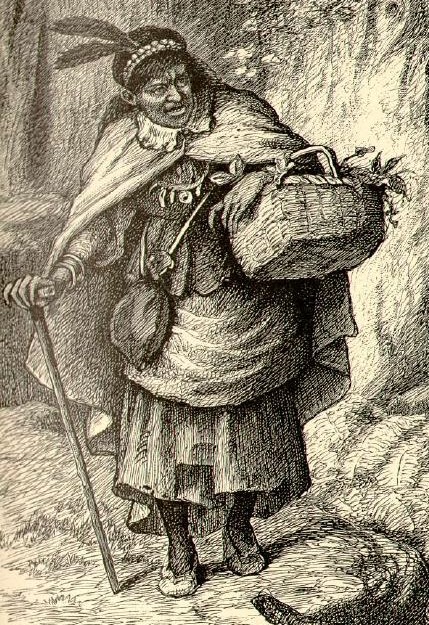
In any case, whatever the reason behind their behavior, the young girls, pressured by the minister, eventually confessed to what he most likely wanted to hear. Namely, they had been bewitched by Tituba and two other marginalized women in the community: a beggar named Sarah Good and an elderly, sick woman who had not attended church for years named Sarah Osborn. Specifically, as mentioned earlier, Tituba was the Parris family’s slave and had a close bond with the children, often entertaining them with tales and stories of magic and horror. The fact that she was the first to be accused, followed by two other women, both of whom were marginalized in society, raises questions about the nature of the accusations.
The women were imprisoned and put under pressure. At this point, the situation began to deteriorate. Initially, all three women vehemently professed their innocence, claiming to be unrelated to the accusations. However, in the end, Tituba, after enduring various pressures and torments, and likely frightened by the fact that she was a slave, told the minister and magistrates what they wanted to hear. That is, yes, she was a witch, and the devil had visited her. She described all the encounters she had with the devil and confirmed the accusations against the other two women. Thanks to that confession, Tituba’s life was spared, but she remained in prison and was later sold. The other two women, who continued to profess their innocence, were hanged as witches. However, this was only the beginning of the general hysteria that would persist for many months to come.
The Dead and the Accused
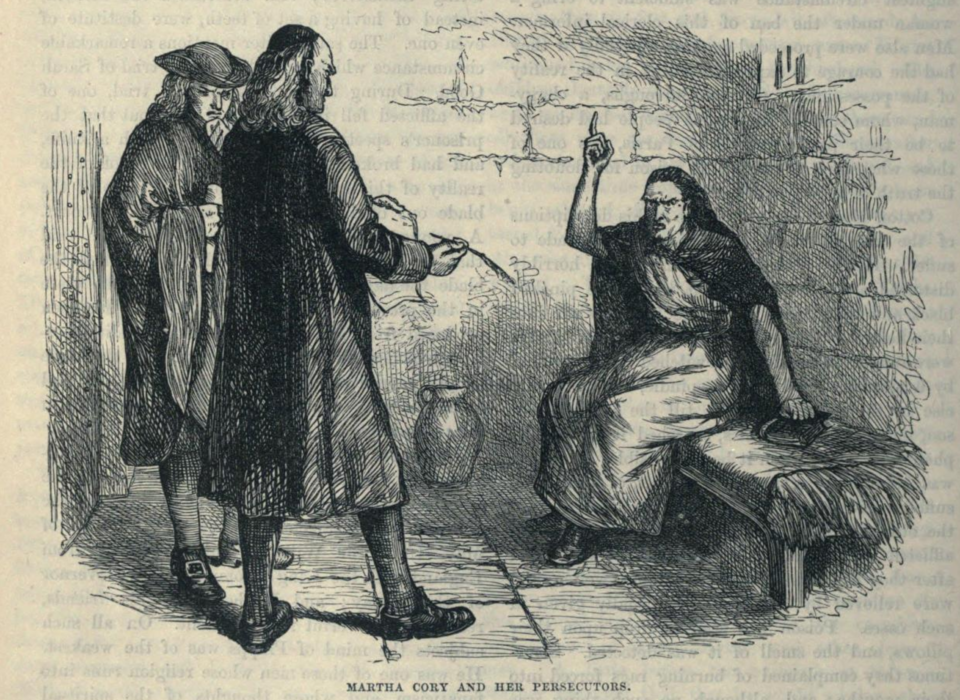
Subsequently, more women began to be accused, and this time, they were not just marginalized members of the community but also women considered honest and irreproachable. Among them, the most emblematic case was that of Rebecca Nurse, a highly regarded woman in the village. As the accusations began to pour in, they eventually encompassed not only women but also men. Consequently, by the end of the trials, there were 20 deaths: 19 were hanged, and one man was pressed to death under heavy stones, a slow and agonizing process used to extract a confession that never came. Moreover, the accused reached a high number, considering the population of the time, totaling around 200 individuals. This means that, in all likelihood, every family had one or more individuals accused of witchcraft in their homes.
The Trials and Spectral Evidence
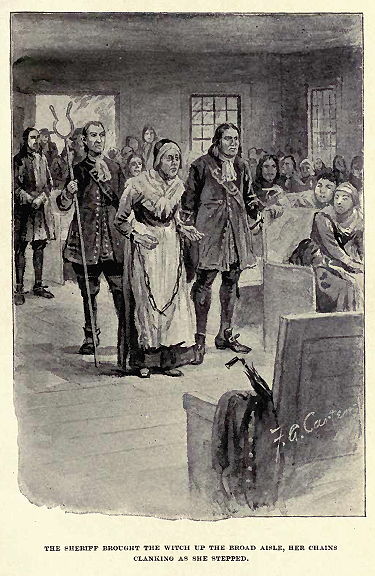
But how did the trials take place? Perhaps the most chilling aspect of all was that to prove the accusations, the so-called “spectral evidence” was admitted in court. These consisted primarily of dreams and visions. The victims were coerced into making statements in which they admitted, for example, to have seen or been attacked by a specter, which was presumably the incarnation of the devil. Moreover, spectral evidence allowed the words of the accusers to be accepted as irrefutable proof. If one of the alleged bewitched girls in court cried out that she had been bewitched and provided evidence by contorting and complaining, then this was considered “spectral evidence” of the defendant’s guilt and demonic presence. In the end, some of the accused, to save their lives, confessed but lived with the trauma for the rest of their lives or were forced to relocate. Those who continued to vehemently profess their innocence, as we have seen, met their demise.
The End of the Trials and Consequences
The situation came to an end when accusations of witchcraft reached the wife of the Governor of Massachusetts, William Phips. At this point, he intervened and ordered the suspension of the trials. A Superior Court of Justice was established, which no longer admitted the use of spectral evidence. In the subsequent trials, only 3 of the remaining accused individuals were convicted. The others were pardoned, and in May 1693, the trials concluded.
The consequences of this tragic episode, however, persisted until recent years. Many people came to regret their actions over time. Even one of the judges who had participated in the trials, Samuel Sewall, publicly acknowledged his mistakes. In the early 1700s, the court declared the trials illegitimate, and some of the families of the victims received financial compensation. It wasn’t until 2001 that all the names of the convicted individuals were officially cleared of charges and expunged.
The Lessons of the Story

This entire affair teaches us many things. Certainly, the most significant lesson revolves around extremism and fundamentalism. In Salem, the opportunity was given for extremism and fear to take control. Fundamentally, the accusers and the trials were not much different from today’s terrorists and religious fundamentalists. We must never let fear of the different and the unknown overpower our lives. Reason, knowledge, and patience are, from this perspective, the simplest and best ways to avoid such things.
Review of Hocus Pocus 2
Regarding the movie, I can say that all in all, I enjoyed it. Certainly, the first one remains the most beautiful and the absolute best. But essentially, this one is not bad either. Seeing the three Sanderson sisters, portrayed more than masterfully by Sarah Jessica Parker, Bette Midler, and Kathy Najimy, was a lot of fun. In the end, I watch these films with the awareness that they are certainly not Oscar-winning masterpieces but rather films that aim to entertain and amuse the audience to provide a few hours of joy. The only discordant note, after delving into the Salem story, I watched the film with a bitter aftertaste. Knowing that such horror and suffering occurred in those places and then watching the film, which still entertained me greatly, left me unsettled. The film is enjoyable, and if they were to make another one, I would gladly watch it. However, I cannot deny that I will always have that bitter aftertaste associated with what truly happened in Salem.
With that said, we have reached the end of this story. As always, if you enjoyed it and found it interesting, please let us know by sharing it or commenting on our social channels!
Sources:
- https://www.worldhistory.org/trans/it/1-19620/i-processi-alle-streghe-di-salem/
- https://www.britannica.com/event/Salem-witch-trials
- https://www.britannica.com/biography/William-Phips
- https://www.treccani.it/enciclopedia/salem_%28Dizionario-di-Storia%29/#:~:text=Localit%C3%A0%20del%20Massachusetts%20che%20fu,17%C2%B0.
- https://www.treccani.it/enciclopedia/salem_%28Enciclopedia-Italiana%29/
- https://www.treccani.it/enciclopedia/padri-pellegrini_%28Dizionario-di-Storia%29/
- https://www.britannica.com/topic/Puritanism
- Documentario Barbero sulle streghe di Salem





